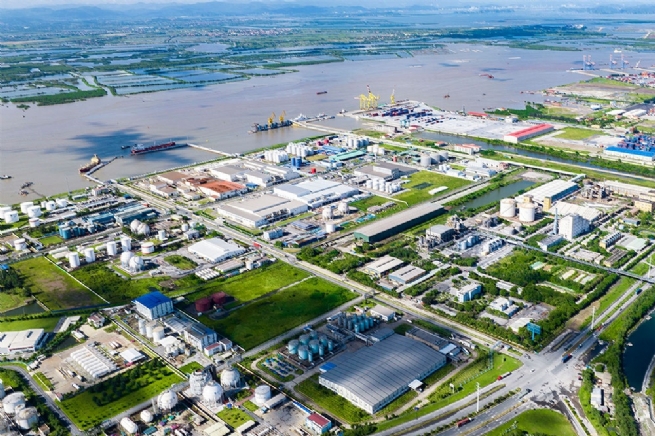10:19:03 AM | 6/28/2023
In Vietnam, industrial zones (IZs) will require substantial investment to compete with the capacity and scale of DEEP C Industrial Zones when the northeastern province of Quang Ninh joins Hanoi and the northern port city of Haiphong to become a key import-export gateway of the Northern Key Economic Region by 2030. If Quang Ninh begins constructing the route from the Dam Nha Mac intersection to Bac Tien Phong IZ by DEEP C in the fourth quarter of this year, this objective will likely be reached shortly.

According to Quang Ninh and Haiphong authorities, DEEP C is a significant port-logistics-industrial complex. Development is based on the regional and local socioeconomic development plan, tied to the economic growth objectives of Haiphong and Quang Ninh with domestic economic connections and situated in the context of international trade.
In addition, the master planning of DEEP C ensures regional and sector-specific planning associated with security and defense to maximize comparative advantages and be compatible with labour resources and environmental protection while using IZs as the core for forming new urban areas.
Particularly, the location of the seaports in DEEP C is optimal due to the harmony between natural and man-made elements, attracting labour sources and people to reside there – a prerequisite for forming new urban areas.
Vadym Sheronov, managing director of Royal HaskoningDHV in Vietnam, stated that investors tend to “seek and pick partnerships with the same standards for sustainability, environmental protection, and labour safety”. According to Sheronov, this creates an edge for IZs that are geared towards eco-industrial parks, and DEEP C is a prime example of a park that successfully attracts investors in the high-tech industry.
Bac Tien Phong and Nam Tien Phong IZs, located in the Quang Yen coastal economic zone, are two significant seaport-logistics-industrial complexes in DEEP C, a key component of the development paradigm for Quang Ninh. The seaport infrastructure of DEEP C connects directly to Lach Huyen Seaport in Haiphong via the Chanh River route, which is presently undergoing dredging.
This comprehensive development plan will contribute to reducing inland transport costs, promoting logistics development in the region, and improving Quang Ninh’s competitiveness.
Koen Soenens, general sales and marketing director of DEEP C, stated that its integrated seaport facilities would serve vessels with a capacity of up to 50,000DWT, carrying both general cargo and liquids. The initiative to dredge the Chanh River is a crucial investment for Quang Ninh’s transformation into a key logistics hub in northern Vietnam.
“Over a total length of almost 13km, we will dredge the river up to -11m corresponding draught,” Soenens said. “This will secure fast and safe sailing between our port complex and Lach Huyen Seaport in Haiphong.”
In response to DEEP C’s initiatives and long-term vision, several reputable international transport and storage service providers, such as BW Industrial, CORE5, and others, have recently announced new ventures. Soenens believes that these are the earliest indications of a prosperous year for both Bac Tien Phong and Nam Tien Phong IZs, which he predicts will become the next best investment location in the north with a blend of industrial services, logistics growth, and port.
“Obviously, this objective would not be achievable without ongoing local support in terms of labour supply, land, licensing procedures, administrative reform, and transportation investment,” Soenens said. “We want to establish a business community that shares common sustainable development values by establishing an eco-industrial park model.”
DEEP C leaders plan to continue to focus on renewable energy projects, industrial symbiosis opportunities, and recycling solutions that provide environmental, economic, and social benefits to local communities.
Source: Vietnam Business Forum